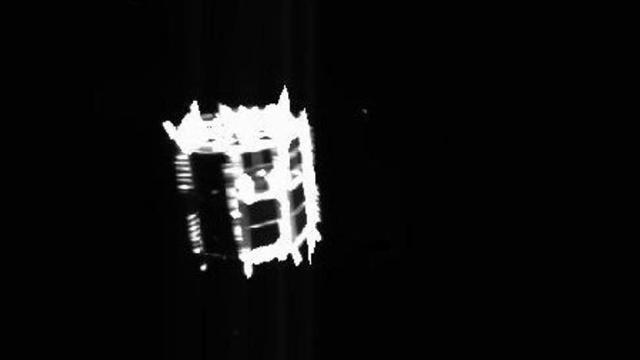The tiny Minerva-II2 probe is now en route to the surface of the asteroid Ryugu, having been deployed by Japan’s Hayabusa2 spacecraft on Thursday. It’s the final phase of this wildly successful mission and the last item on the to-do list before the spacecraft makes its journey back to Earth.
Hayabusa2 released the Minerva-II2 probe at 12:57 a.m. Japan time on October 3 (1:57am AEST) from a distance of around 1 kilometre above the surface of Ryugu, according to the Japan Aerospace Exploration Agency (JAXA).
[MINERVA-II2] Group photo to celebrating the successful separation of MINERVA-II2! It is well past midnight and are now a little tired… but the operation is ongoing! In the future, we will observe the orbital motion of MINERVA-II2 after its separation. pic.twitter.com/BLqS9UQB8I
— HAYABUSA2@JAXA (@haya2e_jaxa) October 2, 2019
In June 2018, Hayabusa2 arrived at Ryugu — a 1-kilometre-wide asteroid located some 280 million kilometers miles from Earth. Prior to this week’s operation, the spacecraft deployed a pair of robotic probes, snapped countless photos of the asteroid, and performed two touchdowns, during which time it collected — we hope — bits of dust and rock from both above and below the surface.
Minerva-II2 was moving around 13 to 17 centimetres per second at separation, so it’s going to take a few days for the tiny decahedron to reach the asteroid’s surface. But that’s kinda the point; a primary scientific goal of the Minerva-II2 mission is to study and better characterise Ryugu’s weak gravitational field and to provide an opportunity for engineers to study the challenges of navigating such a small craft toward an object with such a weak gravitational influence. JAXA will be collecting scientific data from Minerva-II2 as it makes its slow descent and during the brief time it’ll be active on the surface.
The current mission is quite different from Hayabusa2’s previous robotic deployment, when the spacecraft deployed the Minerva-II1A and Minerva-II1B probes on September 23, 2019.
JAXA refers to the Minerva devices as “rovers,” but these tin cans are more accurately described as probes or landers, even if they’re capable of making short “hops” on the asteroid’s surface. Minerva-II1A and Minerva-II1B were dropped from a height of 50 metres, and once on the surface, the probes took spectacular photos along with a very cool video. By virtue of their hops, Minerva-II1 were the first mobile devices to explore the surface of an asteroid.
After releasing Minerva-II2, Hayabusa2 retreated to an altitude between 8 and 10 kilometres, from where it will continue to monitor the lander. This operation will — perhaps sadly — come to an end on October 9. This marks the final mission for Hayabusa2, which is now set to make its triumphant return to Earth with its precious cargo, with an expected arrival date in late 2020.
